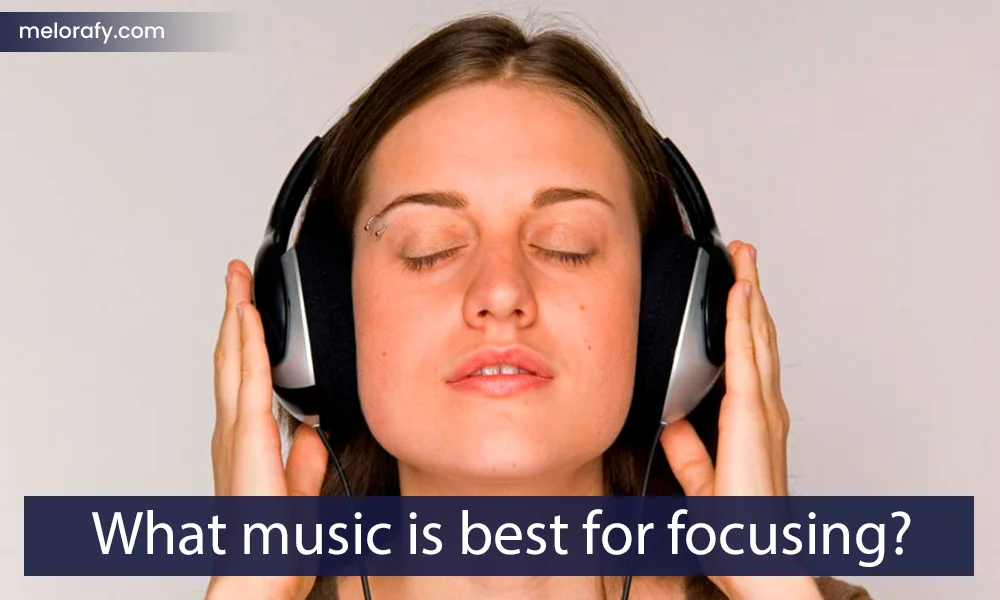
What music is best for focusing?
Have you ever experienced euphoria while listening to your favorite song? This feeling of joy and happiness may be more than a coincidence—it could be the result of the brain releasing a powerful chemical called endorphins. In this article from Melorafy, we explore the wonderful world of music and its potential to release a flood of feel-good hormones that will put a smile on your face and a spring in your step.
Understanding Endorphins
Before we explore the connection between music and endorphins, let’s take a moment to understand what endorphins are and how they affect our mood and well-being. Endorphins are neurotransmitters produced by the brain that act as natural pain relievers and mood enhancers. They bind to opiate receptors in the brain, reducing pain perception and inducing feelings of pleasure and euphoria.
The Power of Music
Now, let’s turn our attention to the power of music. Music has a profound impact on our emotions, capable of eliciting a wide range of feelings, from joy and excitement to sadness and nostalgia. But what is it about music that makes it such a potent emotional stimulant? The answer lies in its ability to activate various regions of the brain involved in emotion processing, memory, and reward.
The Endorphin Connection
Recent studies have suggested that listening to music can trigger the release of endorphins in the brain. When we listen to music we enjoy, our brains respond by releasing endorphins, leading to feelings of pleasure and happiness. This phenomenon is often referred to as the “music-induced pleasure response,” and it highlights the profound impact that music can have on our mood and well-being.
![]()
The Role of Dopamine
In addition to endorphins, music also stimulates the release of dopamine, another neurotransmitter associated with pleasure and reward. Dopamine is released in response to rewarding experiences, such as listening to music, and plays a key role in reinforcing behavior and creating feelings of satisfaction and fulfillment.
The Science of Musical Preferences
Interestingly, the release of endorphins and dopamine in response to music can vary depending on individual musical preferences. Studies have shown that the brain’s response to music is highly subjective, with different genres and styles eliciting different emotional and physiological responses. This suggests that the pleasure derived from music is deeply personal and influenced by factors such as cultural background, life experiences, and personality traits.
Harnessing the Power of Music
Given the profound impact that music can have on our mood and well-being, it’s no wonder that researchers are exploring its therapeutic potential. Music therapy, a practice that uses music to promote healing and improve physical, emotional, and cognitive health, has gained recognition as an effective treatment for a wide range of conditions, including depression, anxiety, and chronic pain.
Conclusion: Music to Your Brain
In conclusion, the idea that music can release endorphins and induce feelings of pleasure and happiness is supported by scientific evidence. Whether you’re listening to an upbeat pop song, a soothing classical melody, or a soulful jazz ballad, the experience of music can have a profound impact on your brain chemistry and emotional state. So, the next time you need a mood boost or a moment of relaxation, why not turn to the power of music and let it work its magic on your mind and body?
![]()
The Healing Power of Music
Beyond its ability to boost mood and release endorphins, music has been shown to have therapeutic effects on both the mind and body. Research suggests that music therapy can reduce stress, alleviate symptoms of depression and anxiety, improve cognitive function, and even enhance physical rehabilitation outcomes. By harnessing the power of rhythm, melody, and harmony, music therapists empower individuals to tap into their innate resilience and creativity, fostering healing and growth.
Music and Exercise
Music’s ability to release endorphins and enhance mood makes it an ideal companion for physical exercise. Whether you’re hitting the gym, going for a run, or practicing yoga, adding music to your workout routine can increase motivation, reduce perceived exertion, and elevate enjoyment. The rhythmic qualities of music can synchronize movement, improve coordination, and boost endurance, helping you achieve your fitness goals while having fun along the way.
The Social Aspect of Music
Music has a unique ability to bring people together, fostering connections and creating shared experiences. Whether it’s singing along to your favorite song at a concert, dancing with friends at a party, or playing music in a band or ensemble, engaging with music in a social context can enhance feelings of belonging and camaraderie. These social interactions further contribute to the release of endorphins, amplifying the positive effects of music on mood and well-being.
![]()
Incorporating Music into Daily Life
With its myriad benefits for mind, body, and soul, incorporating music into your daily life can have a transformative impact on your overall well-being. Whether you’re starting your day with an uplifting playlist, unwinding with calming melodies before bed, or simply taking a moment to appreciate the music playing in the background, cultivating a deep connection with music can enrich every aspect of your life.
Conclusion: Let the Music Play
In conclusion, the evidence supporting the idea that music releases endorphins and promotes feelings of pleasure and happiness is compelling. From its ability to stimulate the brain’s reward system to its therapeutic effects on mental and physical health, music has the power to uplift, inspire, and heal. So, whether you’re seeking a mood boost, a way to enhance your workouts, or simply a moment of joy in your day, let the music play and let its transformative energy wash over you.